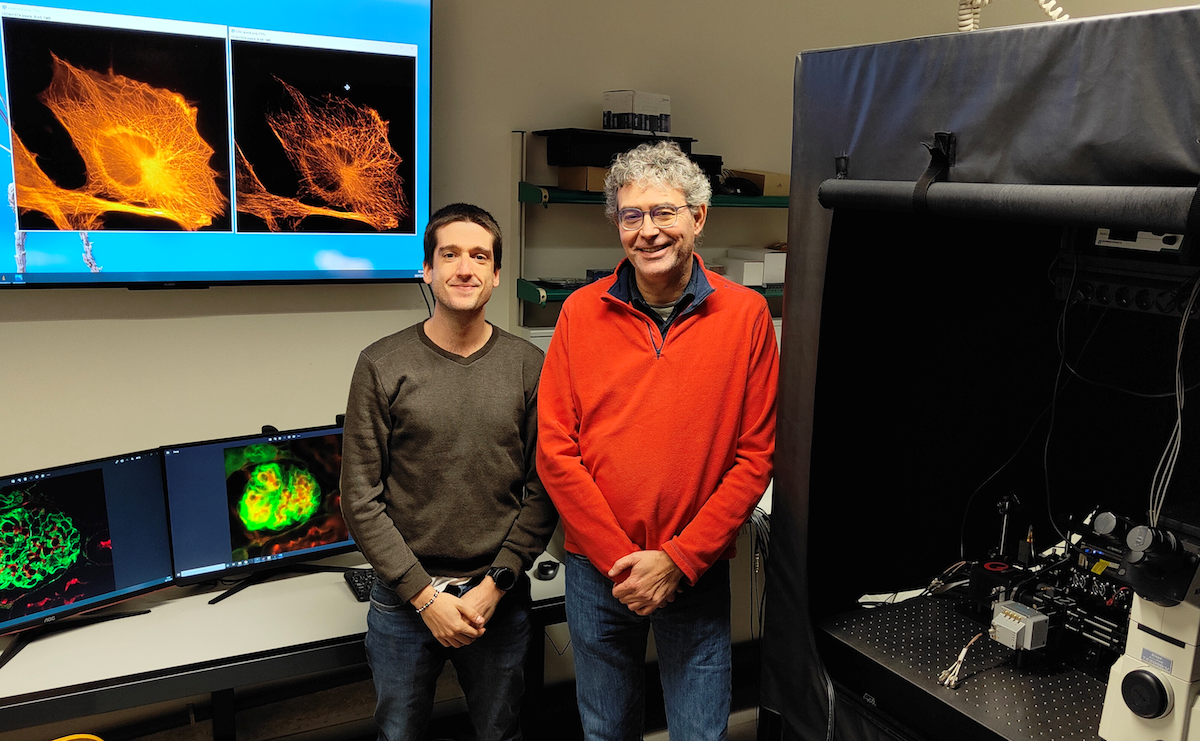
UB reaches agreement with Italian company to develop super-resolution microscope
The University of Barcelona has signed a licensing option with Italian company CrestOptics to develop a super-resolution microscope using structured illumination microscopy that can capture images at a much higher resolution than standard microscopes. This technology has been developed by the Biophotonics group in the Department of Applied Physics in the UB Faculty of Physics.
Through this agreement, the university has given the company permission to use the technology for research for 18 months and then decide whether to sign the licensing deal. In this phase of assessment and development, CrestOptics has pledged a significant financial investment.
The research group, led by Dr Mario Montes Usategui, has been working for five years to develop an advanced prototype of a SIM (structured illumination microscopy) super-resolution microscope that uses lasers to illuminate biological samples, structuring the light and modifying it to obtain images with a much higher resolution than most microscopes currently in use.
“Microscopy has always had a huge impact on the life sciences and people’s wellbeing. In the past 20 years, microscopy has undergone a total revolution and there is a very large, interesting market,” notes Dr Montes. And he adds, “Super-resolution microscopy can see on the molecular level of a cell, which we didn’t have access to before. And reaching a molecular scale, you can see when a cell doesn’t work and will end up developing a disease.”
That’s why Dr Montes believes it is essential to transfer the knowledge to society, which can be achieved through the deal signed with CrestOptics. The company will be able to explore the uses and capacities of this innovation, incorporate it into their instruments and create a microscope with very advanced technology.
“We’ve been working on research projects in this field for years. The Bosch i Gimpera Foundation team helped us get funding to valorise a line of research we thought could have commercial applications. Thanks to this funding, we’ve been able to validate the technology to transfer it. When we do research, the idea is always to transfer it to a company that will turn it into a product available to society,” concludes Dr Montes.
The research was co-funded by the European Union through the EU European Regional Development Fund (ERDF), with support from the Catalan Ministry of Research and Universities. It also received funding from the European Institute of Innovation and Technology (EIT). This body of the European Union receives support through the European Union Horizon 2020 research and innovation programme.

